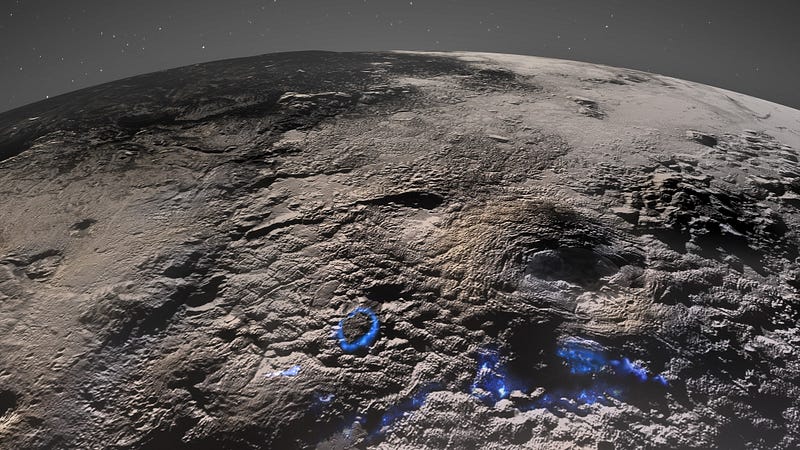Giant Ice Volcanoes Discovered on Pluto: What We Know So Far
Written on
Chapter 1: Discovering Pluto's Ice Volcanoes
Recent analyses of images captured by the New Horizons spacecraft have confirmed the presence of massive ice volcanoes on Pluto, some reaching several kilometers in height. These formations are unlike anything previously documented in our Solar System.

Pluto — [Photo: NASA, Public domain]
The New Horizons mission, which passed by Pluto and its moon Charon seven years ago, continues to yield invaluable scientific insights. The detailed visuals of Pluto, classified as a dwarf planet since 2006, continue to unveil unexpected features of this icy world.
Pluto resides in the far reaches of the solar system, averaging nearly 40 astronomical units from the Sun. To give perspective, one astronomical unit is equivalent to the distance from Earth to the Sun, or about 150 million kilometers. This distant globe is primarily composed of ice and rock, with a mass merely 0.002 that of Earth. Its thin atmosphere consists mainly of methane and nitrogen, and surface temperatures plummet to below minus 220 degrees Celsius.
These characteristics might suggest a lifeless world, appearing as a small, frozen sphere where the Sun shines merely as a distant point. However, since the New Horizons flyby, interest in Pluto has surged among scientists. The probe's images highlighted a vast plain in the northern hemisphere, known as Sputnik Planitia, which bears a striking heart shape.
At the heart of this area lies a mountain range several kilometers high. In 2016, researchers began to theorize that these mountains, referred to as Wright Mons, could be ice volcanoes. Recently, a team led by planetary scientist Kelsi Singer from the Southwest Research Institute in Boulder, Colorado, conducted a closer examination, sharing their findings in a publication in Nature Communications.
Section 1.1: The Magnitude of Pluto’s Ice Volcanoes
Singer's team assessed that Wright Mons could reach heights of up to 5 kilometers and span 150 kilometers in width, with a volume equivalent to approximately 10,000 cubic kilometers—roughly four billion Olympic-sized swimming pools. The team compared these structures to Mauna Loa, one of Earth's largest volcanoes.
"The ice volcanoes on Pluto present a strikingly different appearance than anything we've encountered in the Solar System," Singer notes. "This varied terrain exhibits a distinct texture." She suggests that these formations may be quite young geologically, possibly only a few hundred million years old, with the potential for ongoing activity.

Pluto ice volcanoes — [Photo: NASA, Public domain]
Section 1.2: The Formation of Ice Volcanoes
How do we determine the age of these ice volcanoes? The researchers found only one impact crater on Wright Mons, indicating that these ice formations likely emerged relatively recently.
Their study suggests a subsurface ocean, located 100–200 kilometers beneath Pluto's surface. It is theorized that volcanic activity on Pluto releases a mix of water, methane, and ammonia, which freezes upon contact with the extremely cold surface, resulting in the formation of ice volcanoes.
However, the source of energy that fuels their eruptions remains a mystery yet to be solved by scientists.
Chapter 2: Exploring the Cosmic Landscape
In this video, Dr. Kelsi Singer discusses the discovery of ice volcanoes on Pluto, exploring their implications for our understanding of this distant world.
This video from NASA confirms the discovery of a giant ice volcano on Mars, drawing parallels with Pluto's icy structures and expanding our knowledge of volcanic activity in the solar system.
Sources: Nature Communications, NASA